Chug bug. Jitterbug. Hula popper. Creek chub knuckle-head. Zara spook.
They all have very creative names and designs by the companies that manufacture them. They imitate every conceivable critter that could be on, around or just under the surface of the water in a wild environment from baitfish or bugs to mice or lizards to frogs, toads or even small flying mammals.
They are the “go-to” fishing lures of mid to late-summer. They are top water lures or surface lures, some call them surface or top water baits.
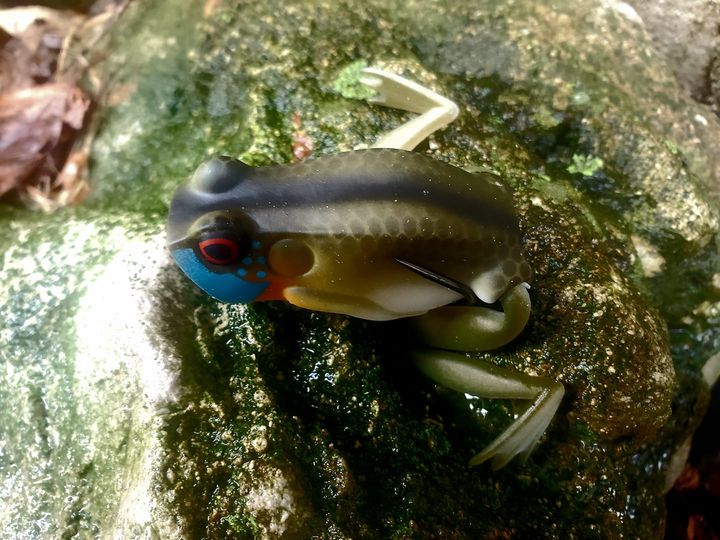
These are effective artificial lures that float and move on the top of the water to try to get fish to strike them. Top water baits can work when other lures fail. A top water bait can cause an uninterested largemouth bass to swiftly go after what appears to be easy or vulnerable prey on the water’s surface.
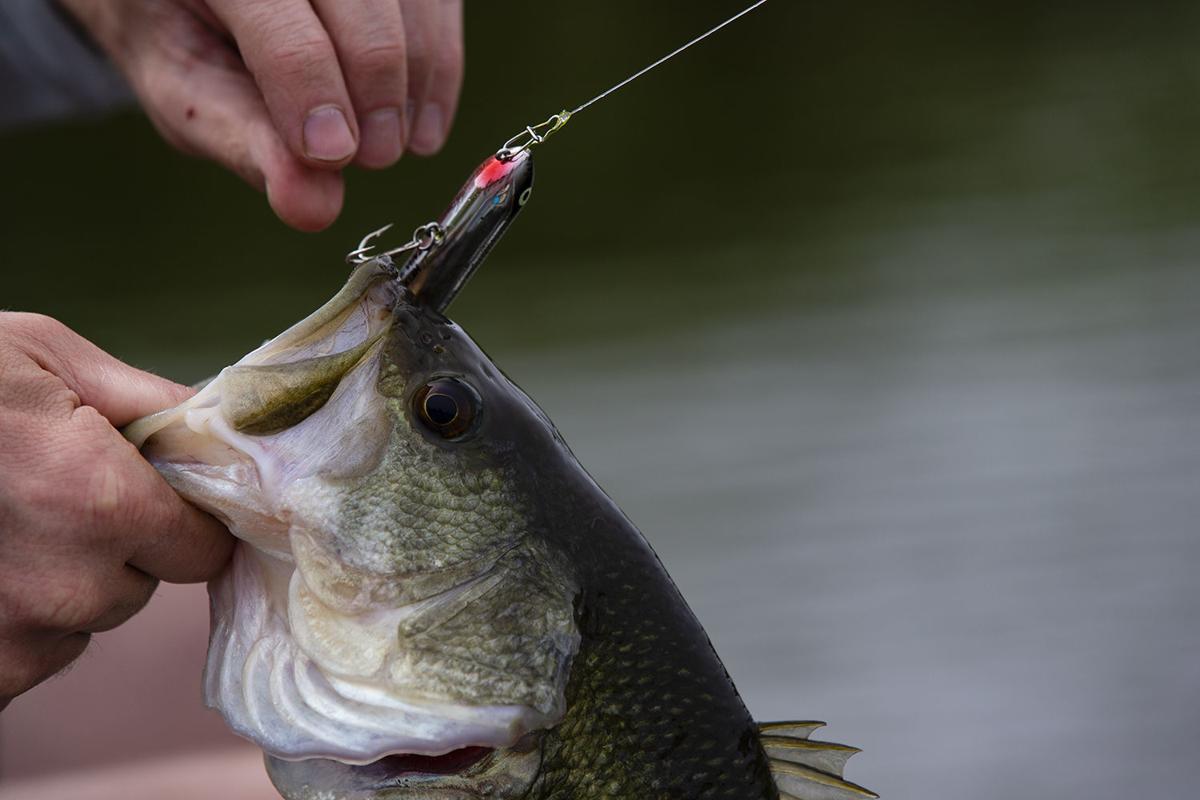
From my perspective, there is no more fun, exciting aspect of fishing than throwing a top water lure in late summer and having a fish like a largemouth bass explode from the water below to inhale it.
Keep in mind largemouth bass aren’t the only fish that can be caught on a top water lure. Northern pike and muskie are notorious for their vicious top water strikes. Smallmouth bass, panfish, trout, walleye and even catfish will hit a lure on the surface under the right conditions.
Daryl Bauer, Fisheries Biologist and Fisheries Outreach Program Manager for the Nebraska Game and Parks Commission, agrees. “It is a “rush” to have a fish violently smash a top water bait off the surface of the water, no question!”
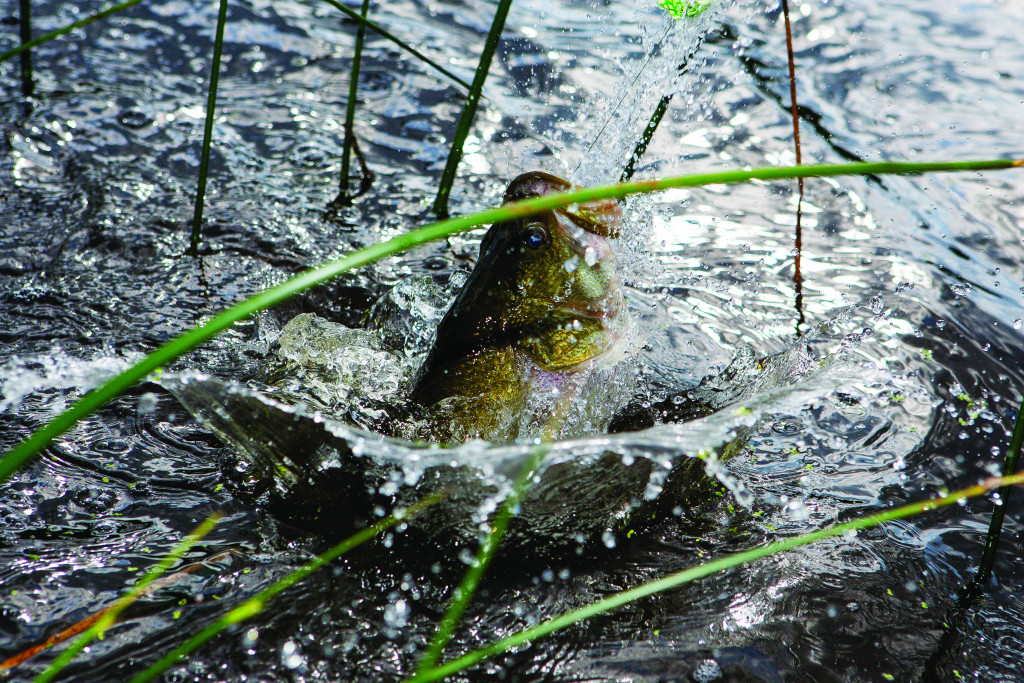
Bauer says he used to think top water lures were a specialized fishing presentation appropriately used only under the best of conditions like a warm, calm sunrise with a few wisps of steam rising off the water, but that’s not the case.
“I have changed my thinking about top water baits over the years,” comments Bauer. “They are not just a novelty. In some situations, they absolutely are the best way to catch the most and biggest fish. And, you know what? The dog days of summer are the best time to be working surface baits.”
Top water lures should occupy a significant portion of your tackle box.
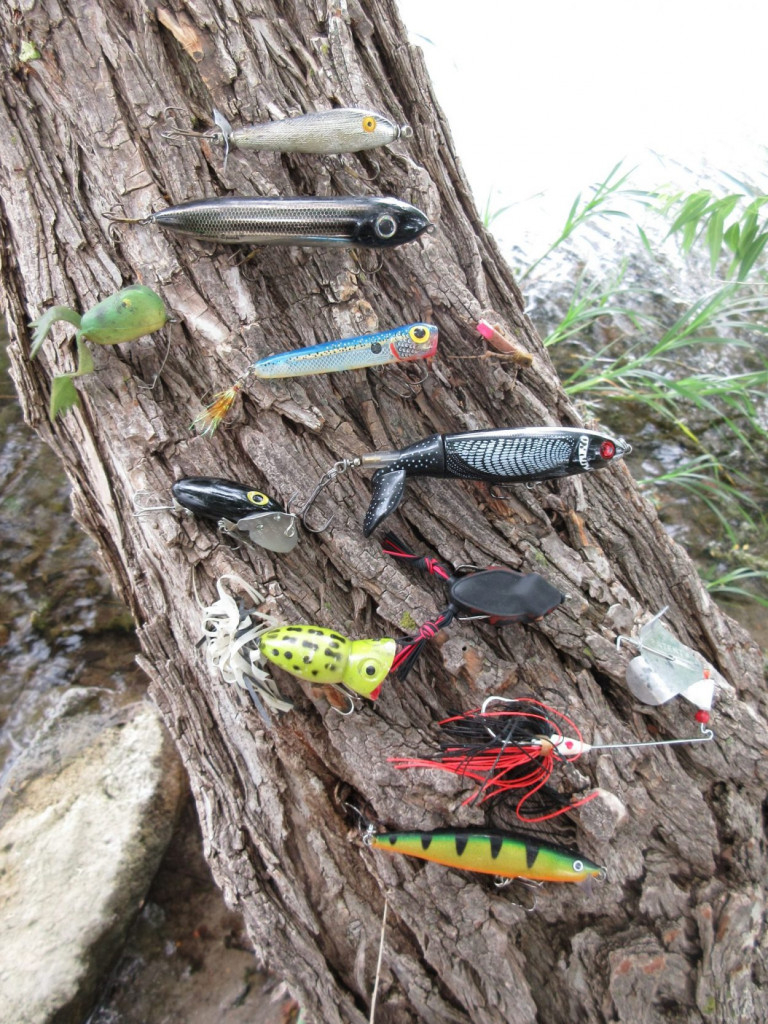
“A great time to grab a top water lure out of your tackle box is when fish are active and feeding. However, even when there is no obvious sign of feeding activity, top water hardware may be your best option to toss as a search bait. Tie on a top water and start covering water; the surface commotion may be more likely to attract a response than other subsurface presentations,” explains Bauer.
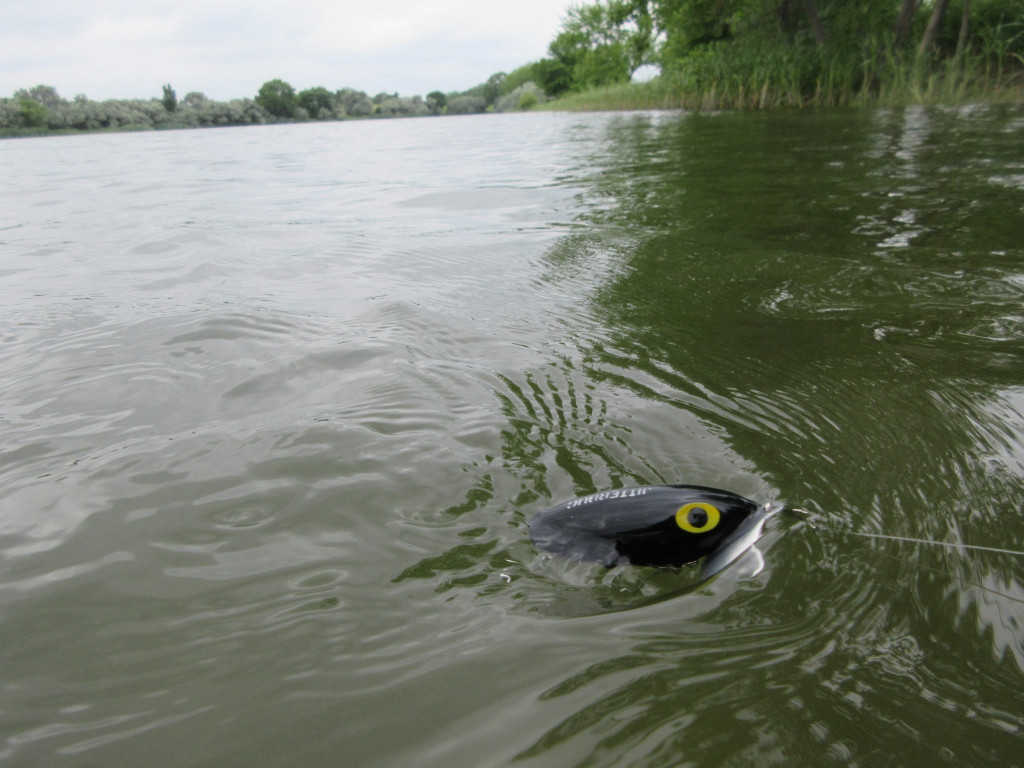
Imitation of an individual aquatic prey species is the concept behind a top water lure, but even more fundamental is how you present it to fish. “The speed at which those baits can be fished on the water’s surface around aquatic vegetation and other habitat is critical,” adds Bauer. “Some of those lures on the surface are made to be fished slowly, some fished relatively fast and some fished with an occasional twitch. Depth and speed are the most important variables to consider when working through the puzzle of which may be the best top water lure to cast at any given time. Bauer says let the fish determine how they want your surface lure.

Before you begin finessing your surface lures in the water, realize how important edges are. Edges denote where different habitats converge or meet. Good examples of edges in the aquatic environment would be where deep water meets shallow water or along a current, mud-line or weed bed. All kinds of fish and wildlife are naturally drawn to edges. Bauer points out below the surface of the water, predator fish, those big sport fish we love to catch, hunt along edges because of the abundance of prey in those areas. “In many cases the predators use edges to their advantage by chasing and trapping prey up against them near the surface,” clarifies Bauer. “So fish your top waters right along the edges.”
Here are some other key factors to consider when fishing with top water lures, according to Bauer:
Types. There is a wide array of top water lures on the market today and they all will catch fish if their hooks are sharp and they are used at the right place at the right time; the trick is using the right tool for the job. “Matching the hatch” involves more than a look-a-like prey item that fish are consuming. It also includes realistically mimicking the behavior of that prey species on the water. In some situations, fast and loud will definitely be the best method for the job. In other situations, slow and subtle will prove successful. Some of the basic top water lure types and examples to know are: Chugger/Popper (Pop-R), Stickbaits (Floating Rapala) , Walk-the-dog (Zara Spook), Chopper/Propeller/Prop baits (Whopper Plopper), Frog (Scum Frog), Toad (Humpin’ Toad) and Buzzbait (Black Buzzbait).
Color. The color of a top water lure often makes more difference to the angler than it does to the fish. Color should be one of the last presentation variables you should be considering. Keep in mind black top waters or black-bellied top waters provide a distinct silhouette to fish looking up at the surface and are usually effective. On the other hand, you might want bright colors so you can see the lure. Color might make a difference in very clear water. Professional anglers will suggest that you stick to natural colors with clear conditions, but don’t get too hung up on it.
Weedless. Another major difference with surface baits compared to other artificial lures is how weedless or “snag-less” they may be. Some of the top water baits are quite weedless and in fact designed to be fished directly in and over the thickest aquatic weed or algae mats imaginable. Other top water lures are not weedless at all and probably contain multiple treble hooks.
Species. Of course about every angler knows that game fish such as largemouth and smallmouth bass as well as northern pike and muskie pursue top water lures. Open-water inhabiting predators like white bass and wipers frequently attack top water lures on the surface, too. Panfish aggressively target top waters as do trout. Even species like walleye and catfish use surface edges of the water to look for food more often than you think and may take a surface lure.
Time of Day/Season. Prime times to employ top water lures are when fish are most likely to be feeding. That means dawn and dusk are good times. Early morning, when the light is low, is a traditional time fish a top water lure. Don’t be afraid to try a surface edge with a top water any time of day though and even into the night, especially during latter part of summer. Believe it or not, cloudy days can also be productive when fish move into the shallows. Watch the surface of the water for a feeding frenzy and if it appears, throw your top waters near it. You can also catch fish on top water imitators well into the fall.
Wind. Less wind is certainly best for fishing top water lures, but do not be afraid to try it with some waves on the water. Obviously, the more subtle, slower top waters are least effective when the wind starts blowing, although you might find some calm pockets where those they still will work. When it is windy and the water a bit murky, choose the top water lures that make the noisiest disturbances. Try them in the waves and don’t be surprised if you have more fish that hit and miss them as the wind increases.
Hooking fish. Understand this about fishing with top water lures, it often results in an overreaction from the jerk on the other end of the line, HA! Anglers notoriously set the hook prematurely at the eruption of water and end up missing the fish. That translates to a surface bait sailing through the air back at you! Lighten up your intake of caffeine and make yourself pause until you actually feel the fish before you set the hook. It is easier said than done, but the better you can master the pause, the more fish you will hook.
No matter what top water pattern you are using, a fish hammering the water’s surface is still one of the most exciting ways to wet a line. If the top tier or tray in your tackle box doesn’t include a variety of top water lures, it should. These surface baits will allow you to cover a lot of open water, fish the thickest weed beds possible and produce fish when nothing else does.
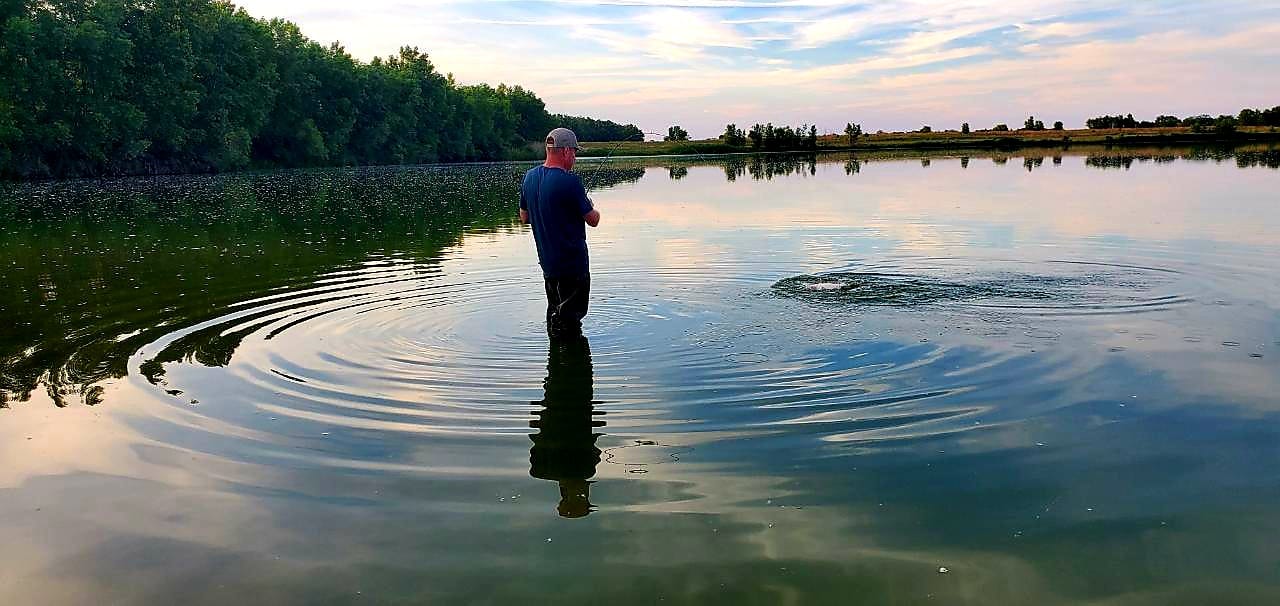
Happy top water fishing!
ANGLER REMINDERS: Make sure you check fishing regulations and share your pics of fish that are caught on top water lures by new anglers in our Take ‘Em Fishing challenge on http://outdoornebraska.gov/takeemfishing/

WHAT THE PROS SAY: Legendary professional angler and TV host Roland Martin offers this information about using top water lures for summer largemouth bass fishing: “My favorite, most basic pattern for catching feeding fish in summer would be a dawn-and-dusk surface plug pattern. It involves getting out before the sun rises or in the twilight hours of the morning or after the sun is setting in the evening and the magical hour begins, because there’s no direct sun on the water. It’s the time of day when generally the convection currents are low and there is very little sun to move the air around, producing almost a slick or mirror-calm surface for working surface plugs. Target shallow water depths for bass with your surface plugs, less than five feet, and focus on ambush points—a stump, rock or any type of a grassy point.”
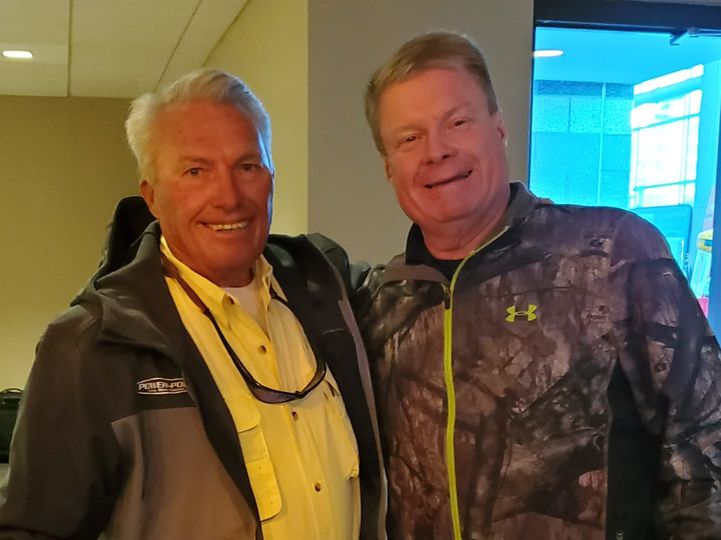
The post Get on Top with Top Water Lures for Your Summer Fishing appeared first on Nebraskaland Magazine.
















